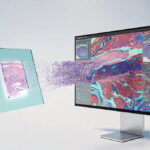As we find ourselves firmly ensconced in the digital age, few industries remain untouched by its influence. The healthcare sector, traditionally slower to adopt technological advances due to stringent regulations and patient safety concerns, is now recognising the immense potential of embracing digital transformation. A critical component of this transformation lies in the transition from paper-based systems to digital platforms. This shift is not merely about replacing paper with pixels; it marks a significant cultural change in how healthcare professionals handle, store, and share crucial information. It provides an opportunity to enhance efficiency, reduce errors, improve patient outcomes, and revolutionise the entire spectrum of care delivery. This article aims to delve deeper into the digital transformation in healthcare, discussing the inherent challenges of traditional systems, the necessity for change, and how the healthcare sector can embark on this journey towards a paperless future.
The Emergence of Digital Transformation in Healthcare
The seeds of digital transformation in healthcare were sown long ago with the advent of electronic health records (EHRs), telemedicine, and remote patient monitoring systems. However, it’s only recently that the full potential of a comprehensive digital transformation has started to unfold, partly spurred on by the challenges of the COVID-19 pandemic. The necessity for remote consultations, access to real-time patient data, and the need for efficient information exchange underscored the importance of digital platforms.
Simultaneously, the continuous drive to improve patient outcomes, streamline processes, and reduce healthcare costs has led to the exploration and adoption of innovative digital solutions. These include advanced document management tools, which aim to digitise every aspect of medical documentation, thereby ensuring that information can be securely accessed, updated, and shared whenever necessary. The impact of this transformation extends beyond mere operational efficiency, promising an enhanced patient experience, improved collaboration among healthcare professionals, and even a positive environmental contribution due to reduced paper consumption.
Challenges of Traditional Paper-Based Systems
While paper-based systems have served healthcare for decades, they come with a multitude of challenges. These systems are typically cumbersome, labour-intensive, and error-prone. They require significant storage space, pose difficulties in retrieving information, and often result in delays due to the time-consuming nature of manual processes. In terms of clinical practice, issues such as illegible handwriting, missing pages, or misplaced files can potentially lead to serious medical errors.
Further, the lack of easy information sharing between different departments or healthcare providers often results in incomplete patient histories, repeated tests, and disjointed care. This scenario not only undermines the quality of care but also inflates healthcare costs. Moreover, in an era where patients are becoming active participants in their own care, the inability of paper-based systems to provide easy access to personal health records stands as a significant roadblock. The privacy and security concerns related to physical documents also warrant attention. These challenges underscore the urgent need for a paradigm shift from traditional systems to more efficient and effective digital platforms.
Benefits of Digital Transformation for Patients and Healthcare Providers
Digital transformation in healthcare presents a wealth of benefits for both patients and healthcare providers. This digital access also supports telemedicine initiatives, offering the convenience of remote consultations and reducing the need for unnecessary hospital visits.
Healthcare providers, on the other hand, can reap the rewards of improved efficiency and reduced errors. Digital systems automate many manual processes, helping to streamline workflows, improve accuracy, and save valuable time that can be better spent on patient care. Easy access to comprehensive patient data can also support more informed decision-making, leading to improved patient outcomes.
Moreover, digital transformation fosters improved collaboration, enabling seamless information exchange between different departments, specialists, or healthcare institutions. It can also mitigate many privacy and security concerns associated with physical documents, through robust data encryption methods and access controls. By reducing the dependence on paper, healthcare providers can also contribute to environmental sustainability, supporting a green initiative alongside improved patient care.
Key Features of Effective Digital Document Management Tools
Digital document management tools are at the heart of the shift towards a paperless healthcare system. To truly revolutionise the way healthcare providers handle documentation, these tools need to have several key features. One of the crucial features is the ability to compress PDF files without losing their quality. As healthcare providers deal with vast amounts of data, reducing file sizes can significantly save storage space and make it easier to share files via email or cloud services. This is particularly important for image-heavy documents like radiology reports or scanned documents.
Moreover, an efficient tool should allow users to convert files easily between different formats. Whether it’s a Word document, a PDF, or an image file, healthcare professionals should be able to convert and handle files seamlessly to ensure smooth information flow. Security features are equally important. Given the sensitivity of healthcare information, digital document management tools should offer robust security protocols, including data encryption and secure access controls.
Additionally, these tools should offer easy integration with existing systems, such as electronic health record (EHR) systems, to ensure that the transition to digital doesn’t disrupt the workflow. They should also be user-friendly, requiring minimal training so healthcare staff can easily adapt to the new system. Lastly, effective document management tools should offer good customer support, including troubleshooting and regular updates to keep pace with the ever-evolving digital landscape. With these features in place, digital document management tools can play a pivotal role in transforming healthcare delivery for the better.
Eco-Friendly Healthcare: The Unseen Benefits of Going Paperless
The move towards a paperless healthcare system isn’t just about improving efficiency and patient care; it also brings about significant environmental benefits, contributing to the broader aim of sustainable healthcare. By going paperless, healthcare providers can significantly reduce their carbon footprint.
Digital systems consume less physical space, reducing the need for large storage facilities and contributing to energy efficiency. They also cut down on the pollution and resource use associated with the production and disposal of paper, including the felling of trees and the water and energy required for paper manufacturing.
Moreover, as digital platforms support remote consultations and patient monitoring, they can reduce the environmental impact of patient travel to healthcare facilities. Therefore, the shift towards a paperless healthcare system is not only a strategic decision for improving healthcare delivery but also an environmentally responsible one.
Future Outlook: The Roadmap to a Fully Digitised Healthcare System
As we look to the future, the roadmap to a fully digitised healthcare system is not without challenges. However, the benefits far outweigh the hurdles, with digital transformation set to reshape healthcare delivery in unprecedented ways. In the future, we can anticipate an increase in interoperability among different digital platforms, enabling more seamless information exchange across various healthcare providers and enhancing continuity of care. Advanced data analytics will harness the power of healthcare data to generate actionable insights, guiding evidence-based care and improving patient outcomes.
The increased use of AI and machine learning within digital platforms will facilitate predictive analytics, risk stratification, and personalised care. Telemedicine will become more pervasive, supported by remote patient monitoring devices and digital health records. As healthcare providers become more comfortable with digital tools, we can also expect more patient engagement through these platforms, fostering a model of care that is more patient-centric and proactive rather than reactive.In essence, the future of healthcare is undoubtedly digital. The journey to a fully digitised healthcare system may be gradual, but with each step, we move closer to a model of care that is more efficient, effective, and patient-centred. The road to this future may be complex, but the destination promises transformative benefits for all stakeholders in the healthcare ecosystem.
Read Also
- Automated Healthcare Software Solutions: How Intelligent Platforms Are Redefining Clinical, Administrative, and Operational ExcellenceThe healthcare industry is undergoing a seismic transformation. Rising patient volumes, value-based care models, staffing shortages, and complex regulatory demands have prompted organizations to look beyond traditional tools and embrace advanced software automation. As providers search for innovative partners capable of tailoring these sophisticated systems to real-world workflows, many turn to MCSI (Managed Care Systems,… Read more: Automated Healthcare Software Solutions: How Intelligent Platforms Are Redefining Clinical, Administrative, and Operational Excellence
- Why Whole Slide Imaging Shapes the Future of Digital PathologyWhole slide imaging has become one of the most important developments in modern pathology. It changes how tissue is examined, how cases are shared and how pathologists collaborate with the wider care team. More than a technological upgrade, it represents a shift in how laboratories think about their workflow, their storage needs and the tools… Read more: Why Whole Slide Imaging Shapes the Future of Digital Pathology
- Comparing 2025 Dental Practice Management Software OptionsSoftware Key Strengths Potential Limitations Best For Dentimax • Offers both cloud-based and on-premise/server deployment. • Tight integration between imaging (e.g. X-ray sensors) and practice management, charts, treatment planning, imaging all in one. • Transparent pricing and relatively simple UI/usability; solid for small to medium general practices. • May lack some of the… Read more: Comparing 2025 Dental Practice Management Software Options
- Top Innovations in Dermatology and Skincare TechnologiesHave you ever wondered how skincare keeps getting better year after year? From fighting acne to reducing wrinkles, today’s treatments seem more advanced than ever before. The tools and techniques used by dermatologists today are smarter, safer, and more effective than those we had just a few years ago. These breakthroughs don’t just help with… Read more: Top Innovations in Dermatology and Skincare Technologies
- Telehealth and Beyond: Building a Connected Continuum of CareHealthcare is on the verge of a radical transformation. Technology no longer simply supports medicine; it actively shapes how care is delivered and experienced. Achieving a seamless continuum demands more than deploying tools—it requires intentional design, coordinated teamwork, and innovative platforms that adapt to diverse clinical and patient needs. This article explores key strategies for… Read more: Telehealth and Beyond: Building a Connected Continuum of Care
- Optimizing CT Protocols: The Hidden Key to Efficiency and Cost Savings in RadiologyIntroduction: Why CT Protocol Optimization Matters Computed Tomography (CT) is a cornerstone of modern diagnostic imaging, providing critical information across nearly every medical specialty. However, maximizing the value of CT — both clinically and financially — requires more than just advanced hardware. The real secret lies in the optimization of CT protocols. When CT protocols… Read more: Optimizing CT Protocols: The Hidden Key to Efficiency and Cost Savings in Radiology







